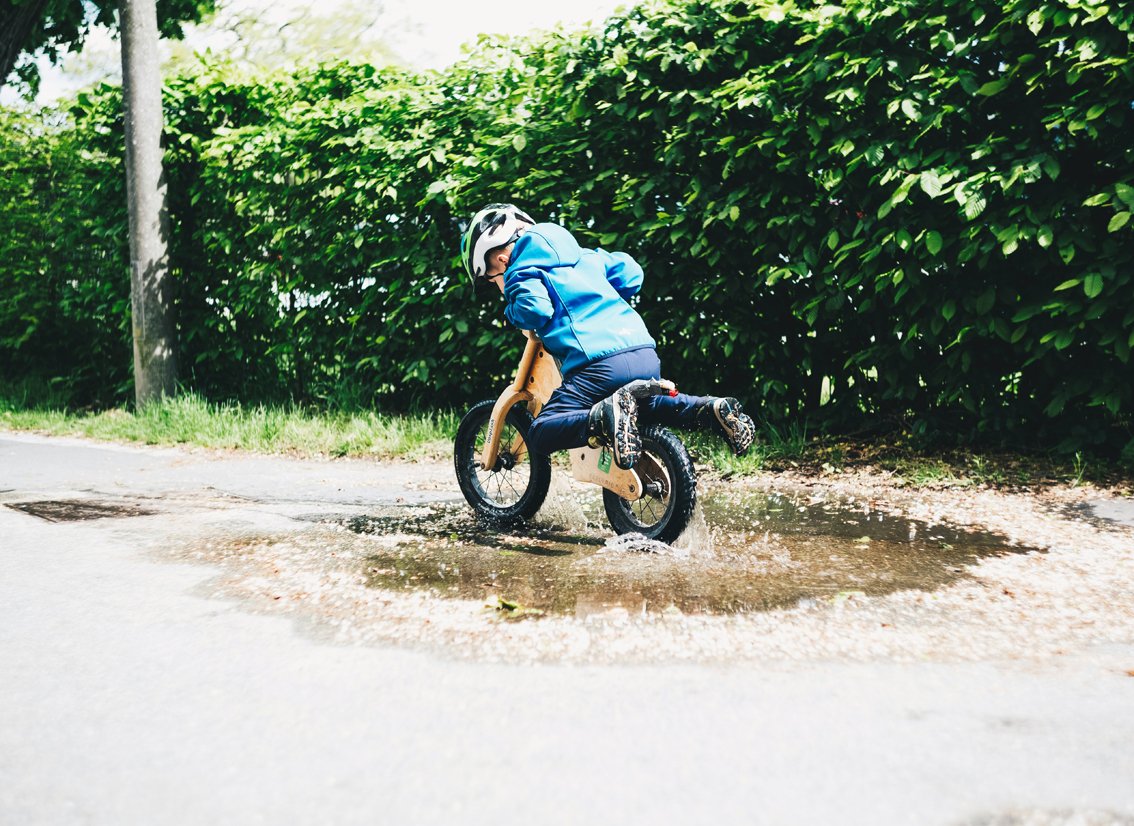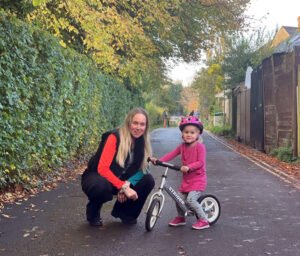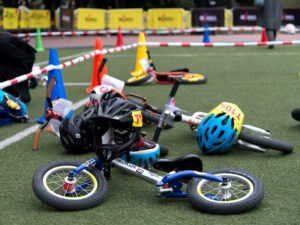In praise of balance bikes

By Emily Kerr
Emily is Oxford City Councillor for the Green Party, St Mary’s Ward
An academic study was recently published on how very young children learn to cycle. It found that children who learned on balance bikes can ride a normal bike much earlier than their peers who learned with stabilisers.

As a mother who has taught three children to cycle on balance bikes, I’m a huge fan. They are a great way of teaching very young children some of the key skills around cycling. They’re generally recommended from ages two to five. My eldest children learned to use them at around age two, although my youngest was nearly three. I’ve recently had conversations with two East Oxford nursery leaders who have ordered balance bikes for their children, replacing the conventional tricycles they used to have.
Why are balance bikes so good?
Cycling is a ‘foundational skill’. This means it underpins lifelong engagement in physical activity. But it’s also a complex skill that requires children to mount, balance, pedal, steer, brake and dismount. Balance bikes teach children to do all of these except pedalling. Then, when they’re ready to pedal, often at around age four, they can pick it up much quicker.
Balance bikes take longer to learn than a tricycle or a bike with stabilisers, but they’re a lot more fun and they can be ridden on almost any surface. They’re easiest on tarmac, but a competent balance-biking child can easily whizz across grass or along a muddy path. Best of all, you don’t really need to do any teaching, you just put a young child on one at the right height and let them work it out for themselves.
What to buy

When you’re choosing a balance bike, I would say the three key decisions to make are around price, weight and brakes. More expensive bikes are generally more robust and are often suitable for multiple children. They can be repaired if the bearings break. The lighter the bike the better in my experience. It is easier for small children to steer and manoeuvre a lighter bike. You’ll inevitably end up carrying it a lot, and you can easily hook a light one on the back of a buggy.
Most balance bikes don’t have brakes, so you need to think about road safety – or buy one with brakes if you think you’re likely to often use it on pavements. Most of them have adjustable seat heights but do make sure, especially if you plan to use it for multiple children.
My tips
We bought a second-hand aluminium Strider and it’s been great through five children aged from two to four. We’ve had both the bearings and the wheel replaced by a conventional bike shop and it’s still going strong. Aluminium is rust-proof so we can store it outside. We share all our kids’ bikes with another family with kids of different ages and we regularly switch our bikes over as children grow. This means bikes are almost always being used rather than taking up storage space.
It’s worth knowing that children will often cycle only very briefly on balance bikes, especially when they are starting out. Don’t worry if you buy one and your child only uses it for two or three minutes at a time before getting bored. When they are a little more used to it, you can play the ‘stopping game’ with them. Just shout ‘stop’ and they have to stop as quickly as possible. This is helpful for teaching road awareness later on.
If you’re looking for a great present for a two to four year-old this Christmas, a balance bike will set them up well for life.
Image credits
Emily Kerr
